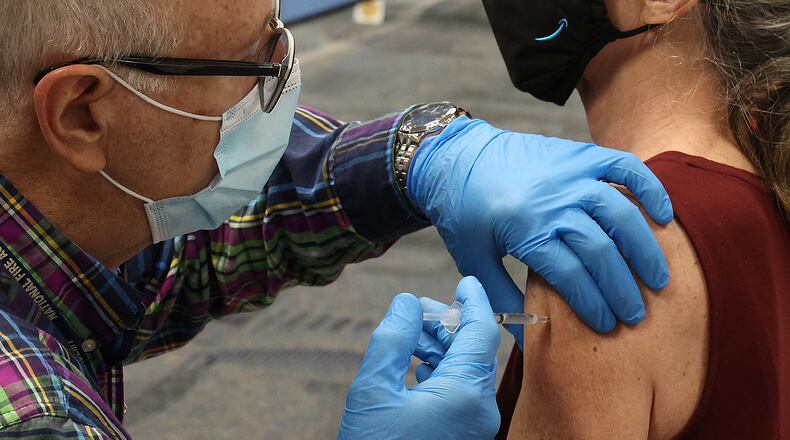When determining community levels, the CDC looks at the number of new coronavirus cases per 100,000 people in the past week as well as new COVID hospital admissions and the percent of staffed inpatient hospital beds occupied by coronavirus patients.
“What that really means is there’s a lot of community transmission, and that we are at risk of our healthcare system being taxed by these COVID cases,” said Clark county assistant health commissioner Chris Cook. He, along with health commissioner Charles Patterson, hosted the COVID-19 weekly livestream held by the Clark County Combined Health District.
Champaign County has had more than 9,000 cases of the virus confirmed since the pandemic’s start. Clark County on Friday had 37,343 total cases of the virus.
According to Clark County’s health district, as of the week ending July 22, the two-week COVID-19 incident case rate in is 383.3 for every 100,000 residents in the county. The seven-day incident case rate is 240.15 per 100,000.
Patterson and Cook urged residents to consider masking up in public spaces and keeping up-to-date on vaccinations.
About 42% of U.S. counties have a high community level of the virus, a huge increase from 6.5% last week, according to the CDC. There are 37.6% of counties with a medium community level and 20.4% at a low community level.
The CDC recommends people in high COVID community level areas wear a well-fitted mask while indoors in public regardless of vaccination status and to try to maintain improved ventilation in indoor spaces when possible.
Statewide, the number of hospital patients with COVID increased by 13% in the last week, with west central Ohio recording a 32% increase and southwest Ohio recording a 4% increase, according to the Ohio Hospital Association. There were 1,166 people hospitalized with COVID in Ohio as of Thursday.
Cook said that 12 COVID-19 hospital admissions per 100,000 people in Clark County were reported this week, influencing the county’s rise to a “high” community level. In addition, 4.7% of staffed in-patient hospital beds locally are holding COVID-19 patients.
“This rise in hospitalizations has been a little more dramatic,” Patterson said.
People who are immunocompromised or at a high risk of severe disease should wear a mask or respirator that offers greater protection and should consider avoiding non-essential indoor activities in public. They should also talk to their health care provider about any additional precautions they can take, according to the CDC.
Those who are in close contact with someone who is a high risk for severe illness should consider self-testing before being in contact with them or wearing a mask when indoors with them.
People also should stay up to date with COVID vaccines and boosters. Anyone exposed to the virus or who has symptoms of COVID should get tested, according to health officials.
Approximately 58.6% of the state of Ohio is considered fully vaccinated, according to the Ohio Department of Health. With the exception of Warren County — of which approximately 64.56% is fully vaccinated — most of the Miami Valley lags behind the state average.
Within the region, vaccination rates vary from 38.37% and 47.28% in Darke and Miami counties, respectively, to 51.36% and 56.79% in Clark and Butler counties, respectively. Montgomery and Greene counties, which have continued to remain at high community levels, have vaccination rates of 55.55% and 55.41%. In Champaign County, roughly 43% of the county’s population has completed its vaccine series as of Friday.
On Thursday, the Ohio Department of Health reported 26,610 cases were added to the state’s total in the last week. It’s the second week in a row Ohio has recorded more than 20,000 cases.
In the state’s most recent variant data from June 19 through July 2, more than 99% of Ohio’s cases were attributed to four different omicron variants. Omicron BA.5 made up the majority of cases at 45.8%, followed by omicron BA.2.12.1 accounting for 31.3% of cases, according to ODH. Omicron BA.2 and omicron BA.4 accounted for 11.64% and 10.69% cases respectively.
Ohio uses genomic sequencing to determine the variant, but it can only be performed on PCR tests with a high enough viral load.

